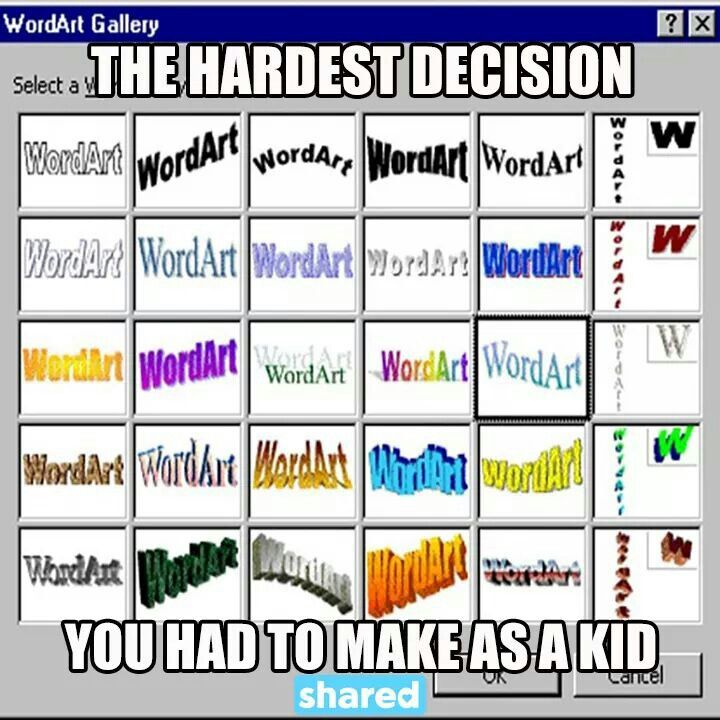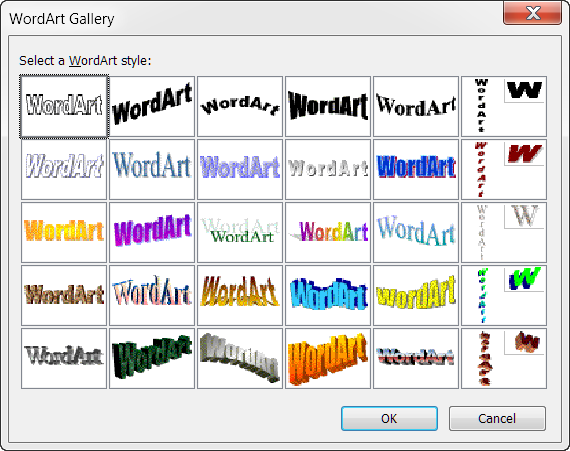The 1990s was a transformative decade for technology and design—a time when personal computers began to make their way into homes and offices, and digital creativity was just beginning to flourish. Among the many innovations that left their mark on this era, WordArt stands out as a symbol of playful experimentation and creative self-expression. Today, we look back at how WordArt in the 90s changed the way we approached digital design and left an indelible imprint on our cultural memory.

The Rise of WordArt in the 90s
Introduced as a part of early Microsoft Office suites, WordArt quickly became a favorite tool for users who wanted to spice up their documents and presentations. In an age when digital design was still in its infancy, WordArt provided an accessible way for anyone to create visually appealing text effects without needing advanced graphic design skills. With a few clicks, ordinary text transformed into vibrant, curvy, and colorful graphics that captured the spirit of the decade.
WordArt was more than just a novelty—it was a gateway to a new form of digital artistry. The tool’s wide range of options, from dramatic 3D effects to playful distortions, allowed users to experiment with typography in ways that were previously unimaginable. Whether it was for school projects, office memos, or personal scrapbooks, WordArt brought an element of fun and creativity to the digital experience.
The 90s Aesthetic: Bold, Bright, and Unapologetically Fun

The design trends of the 90s were all about bold colors, experimental fonts, and a sense of rebellious creativity. WordArt perfectly embodied this aesthetic. Its templates and effects were emblematic of a time when the internet was still a nascent frontier and digital design was unrestrained by the polished minimalism we see today.
Many remember the thrill of opening a document and being greeted by swirling, rainbow-colored text or the dramatic flair of shadowed, beveled letters. These visual elements weren’t just decorations—they were a reflection of a generation that celebrated individuality and the joy of creative experimentation. WordArt gave everyday users the power to make a statement, turning simple announcements into dynamic visual experiences.
Impact on Home Computing and Office Culture
In the 90s, as personal computers became a staple in households and workplaces, WordArt played a significant role in democratizing design. For many, it was the first encounter with digital creativity. Teachers used it to make classroom materials more engaging, while businesses employed WordArt to add a distinctive touch to marketing materials and internal communications.
The tool also found its way into the burgeoning world of desktop publishing, where it helped bridge the gap between professional graphic design and everyday document creation. This accessibility meant that design was no longer confined to experts—it became a shared language of creativity that anyone could understand and enjoy.
Nostalgia and the Enduring Legacy of WordArt
Today, as we reflect on the technological leaps of the 90s, WordArt remains a beloved symbol of that innovative era. Its legacy is evident in modern design tools that continue to offer users creative ways to manipulate text and images. Many designers and casual users alike look back fondly on the quirky, exuberant styles that WordArt made possible.
For those who experienced the 90s firsthand, revisiting WordArt is like taking a trip down memory lane—a reminder of a time when the digital world was full of endless possibilities and every document held the promise of creative expression. Even as design trends evolve, the playful spirit of WordArt continues to inspire new generations to experiment and push the boundaries of digital creativity.
Final Thoughts
WordArt in the 90s was more than just a feature in a software suite—it was a cultural phenomenon that captured the excitement and innovative spirit of its time. It transformed mundane text into eye-catching art, making digital communication more dynamic and accessible to everyone. As we navigate an increasingly sophisticated digital landscape, it’s worth taking a moment to appreciate the simple joys and creative breakthroughs of the past.
Whether you’re a seasoned designer or someone who fondly remembers crafting colorful newsletters on your old computer, WordArt remains a testament to the power of creativity in the digital age. So fire up your favorite retro software or search for a vintage screenshot online, and let yourself be transported back to the vibrant world of the 90s—a time when every document was an opportunity to make art.
